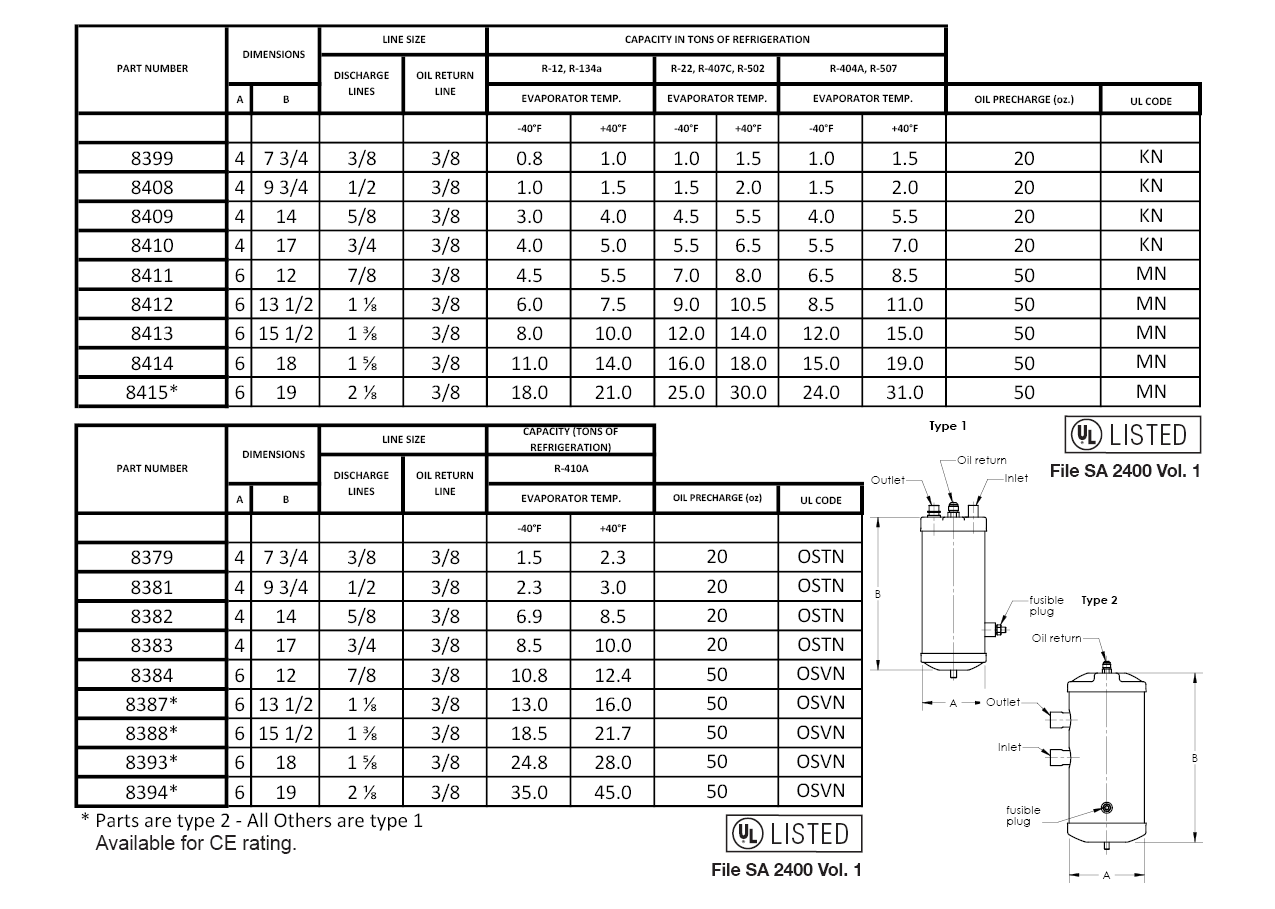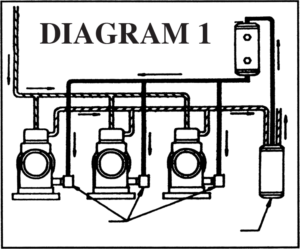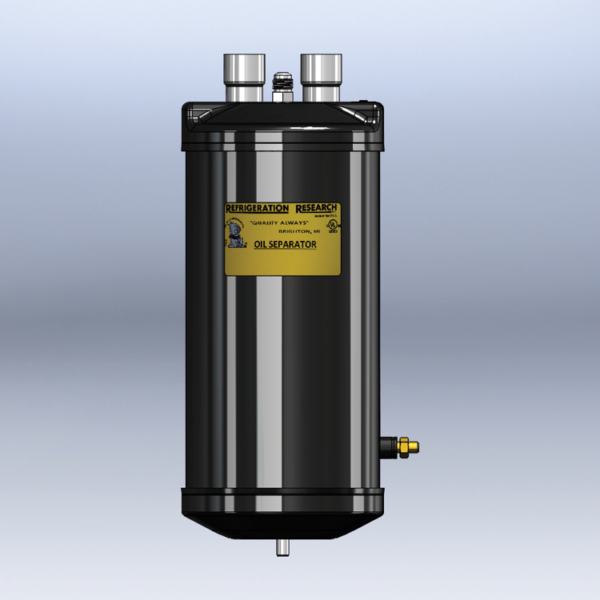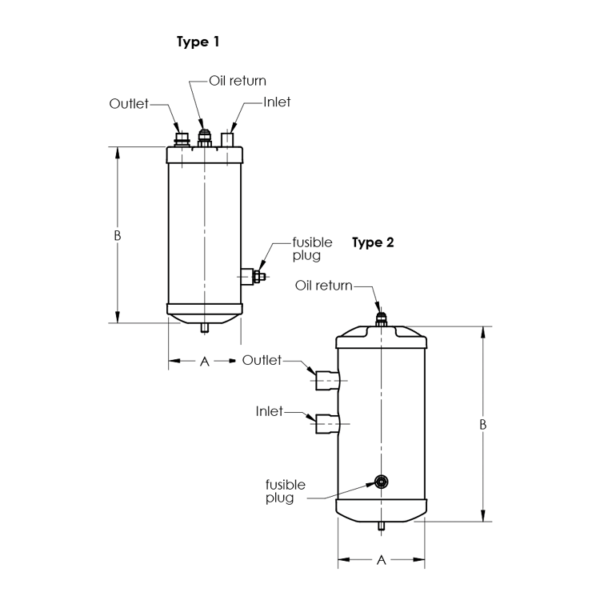Oil Separators and Oil Separators for 410A
- Description
- Specifications / Application Data
Description
FOR INCREASED EFFICIENCY AND . . . ENERGY SAVINGS
Refrigeration Research offers oil separators for either single or multiple (parallel) compressor systems. All of these separators are hydrogen copper brazed and pressure tested to assure cleanliness and reliability.
The oil separators listed below contain an internal mechanical float to provide the return of oil to the crankcase of the compressor or the oil reservoir. A chart of special models below are for use for R-410A refrigerant.

 Mount all oil separators vertically. The smallest connection on the top, the 3/8” flare, returns the oil to the compressor or to the top of the oil reservoir as shown in diagram 1. Connect the discharge line from the compressor to the nipple labelled “IN”. The other nipple connects to the condenser.
Mount all oil separators vertically. The smallest connection on the top, the 3/8” flare, returns the oil to the compressor or to the top of the oil reservoir as shown in diagram 1. Connect the discharge line from the compressor to the nipple labelled “IN”. The other nipple connects to the condenser.
Multiple (parallel) systems require oil level regulators attached to the crankcase of each individual compressor. Also, a pressure differential valve in a separate line from the oil reservoir to the common suction line regulates the pressure in the oil reservoir to prevent excessive pressure in the oil reservoir while still maintaining a positive pressure above the crankcase pressure.

 Mount all oil separators vertically. The smallest connection on the top, the 3/8” flare, returns the oil to the compressor or to the top of the oil reservoir as shown in diagram 1. Connect the discharge line from the compressor to the nipple labelled “IN”. The other nipple connects to the condenser.
Mount all oil separators vertically. The smallest connection on the top, the 3/8” flare, returns the oil to the compressor or to the top of the oil reservoir as shown in diagram 1. Connect the discharge line from the compressor to the nipple labelled “IN”. The other nipple connects to the condenser.
Multiple (parallel) systems require oil level regulators attached to the crankcase of each individual compressor. Also, a pressure differential valve in a separate line from the oil reservoir to the common suction line regulates the pressure in the oil reservoir to prevent excessive pressure in the oil reservoir while still maintaining a positive pressure above the crankcase pressure.





